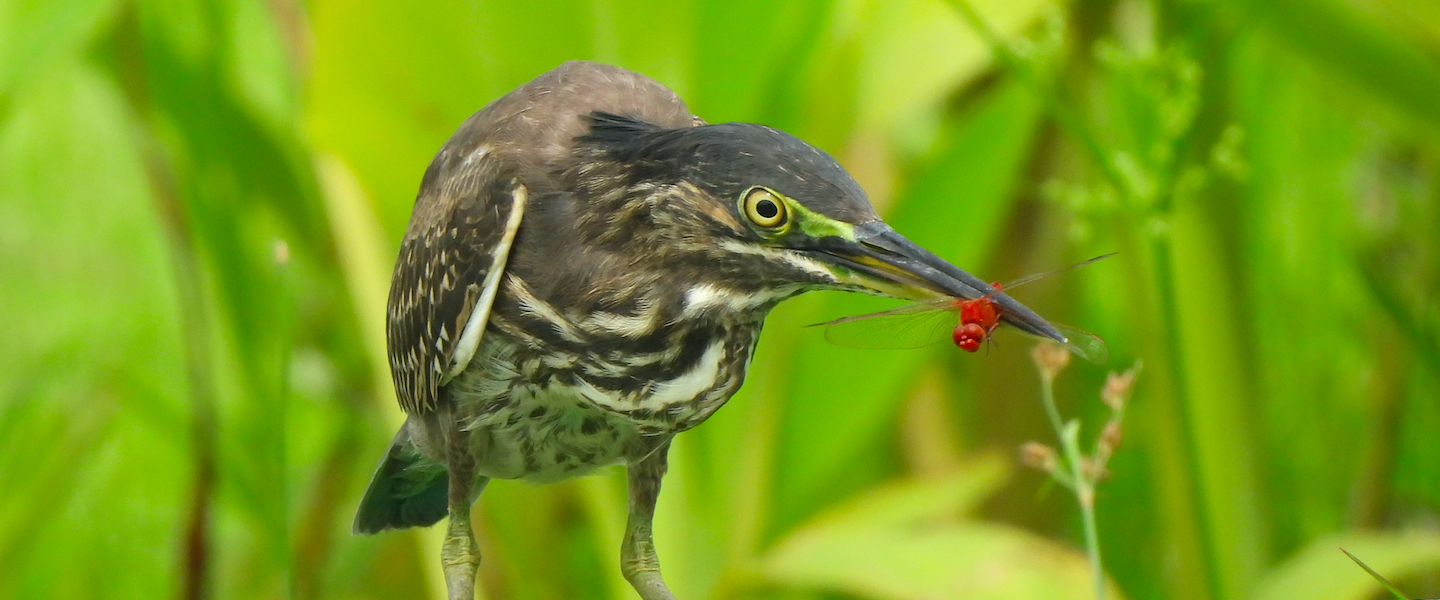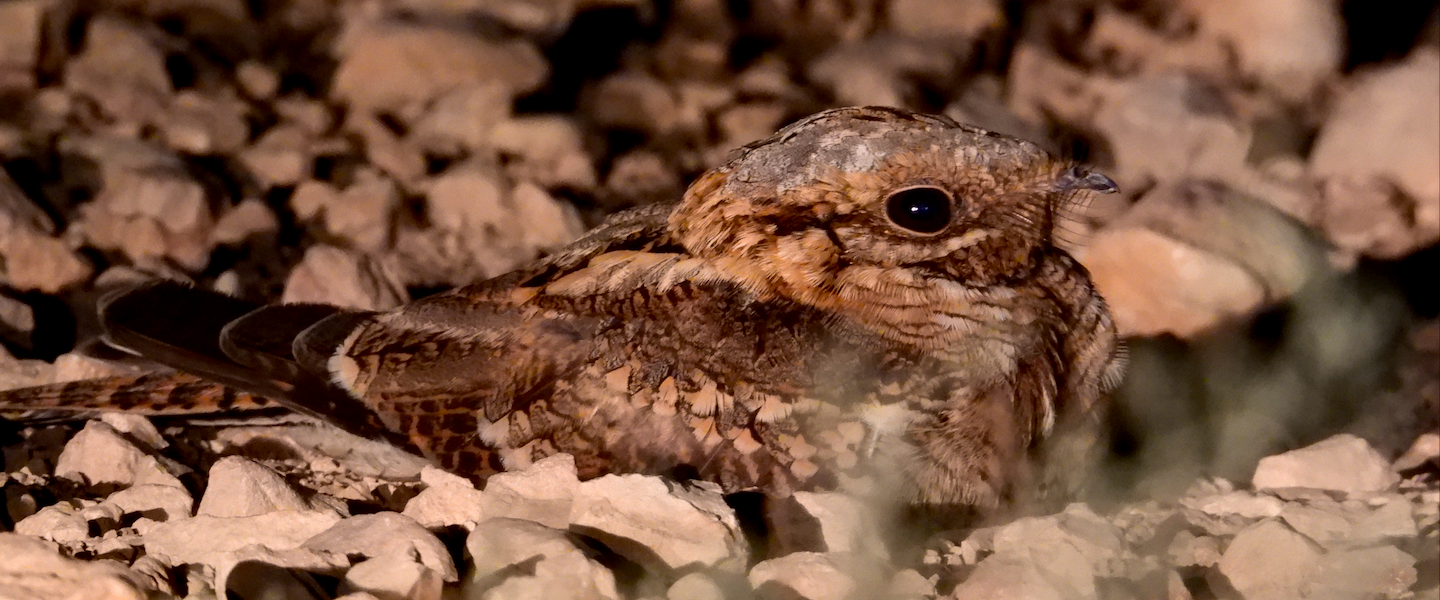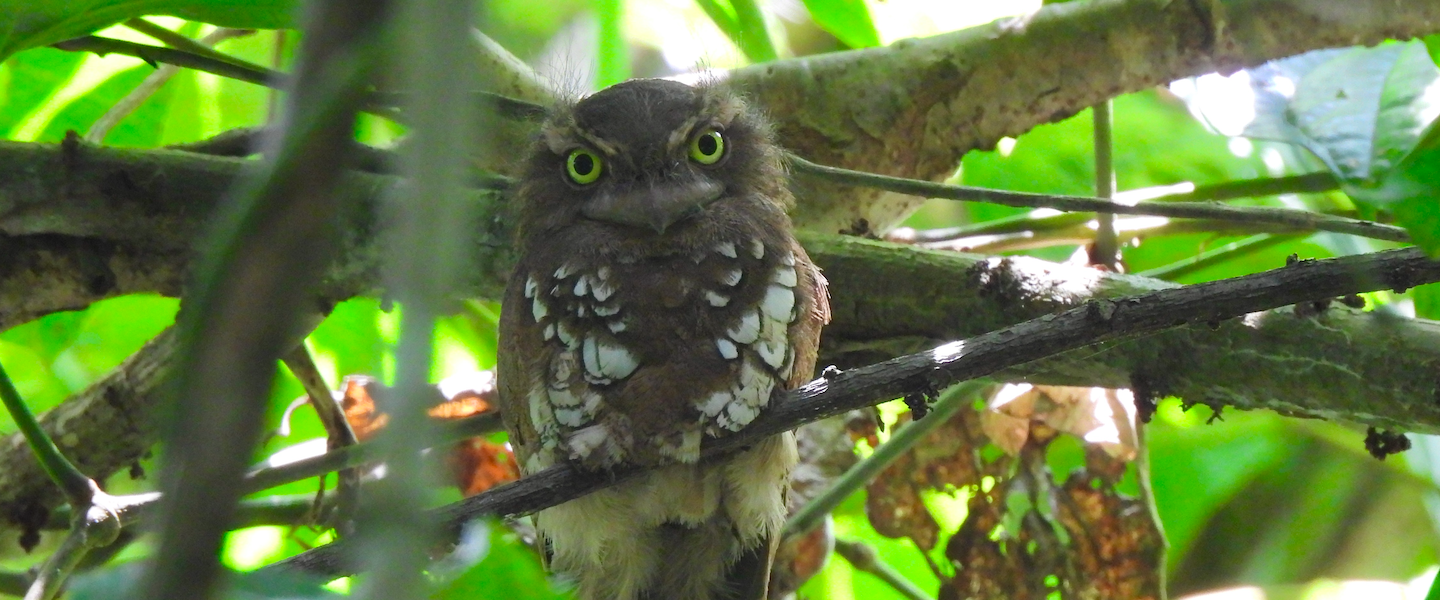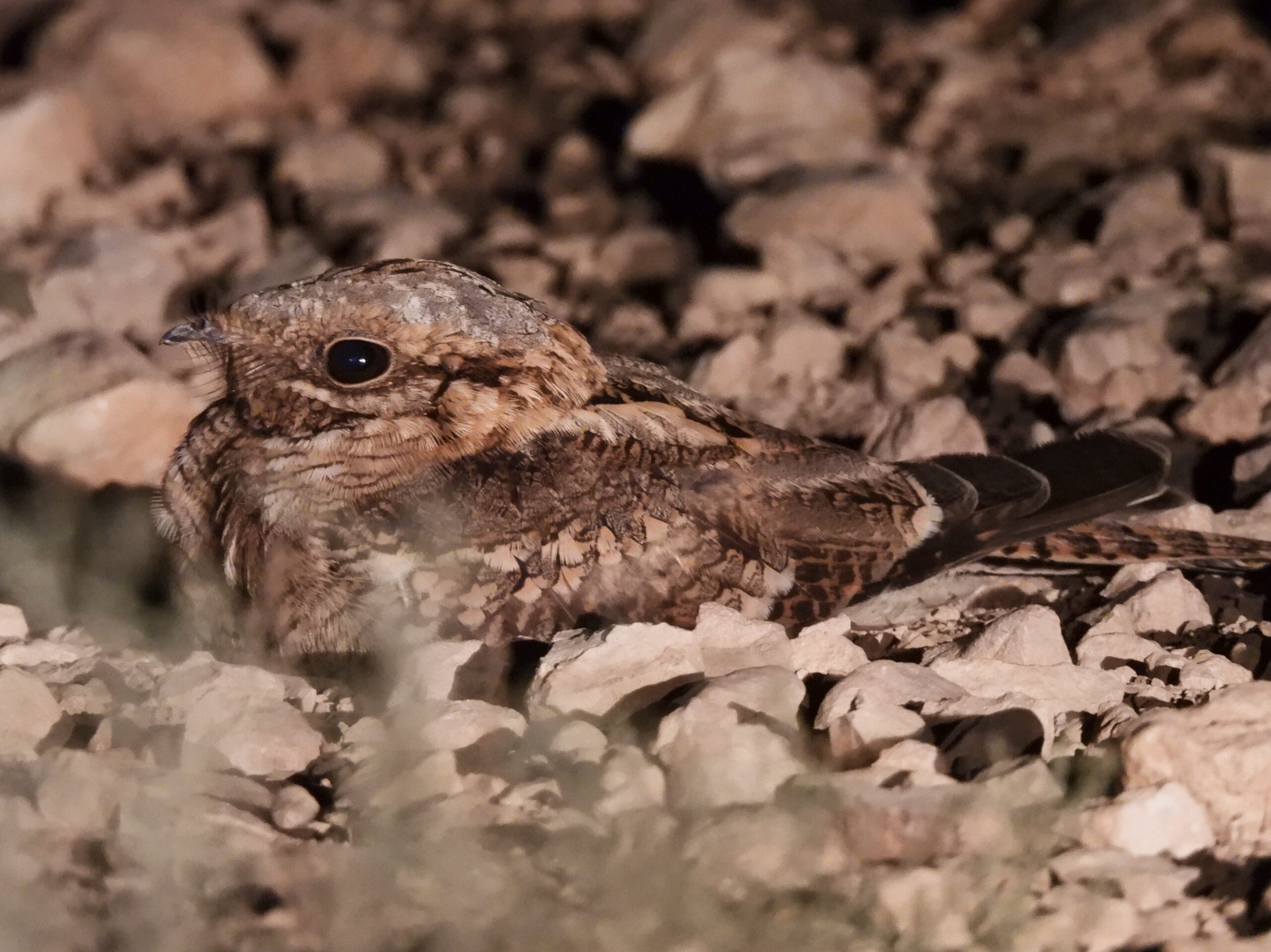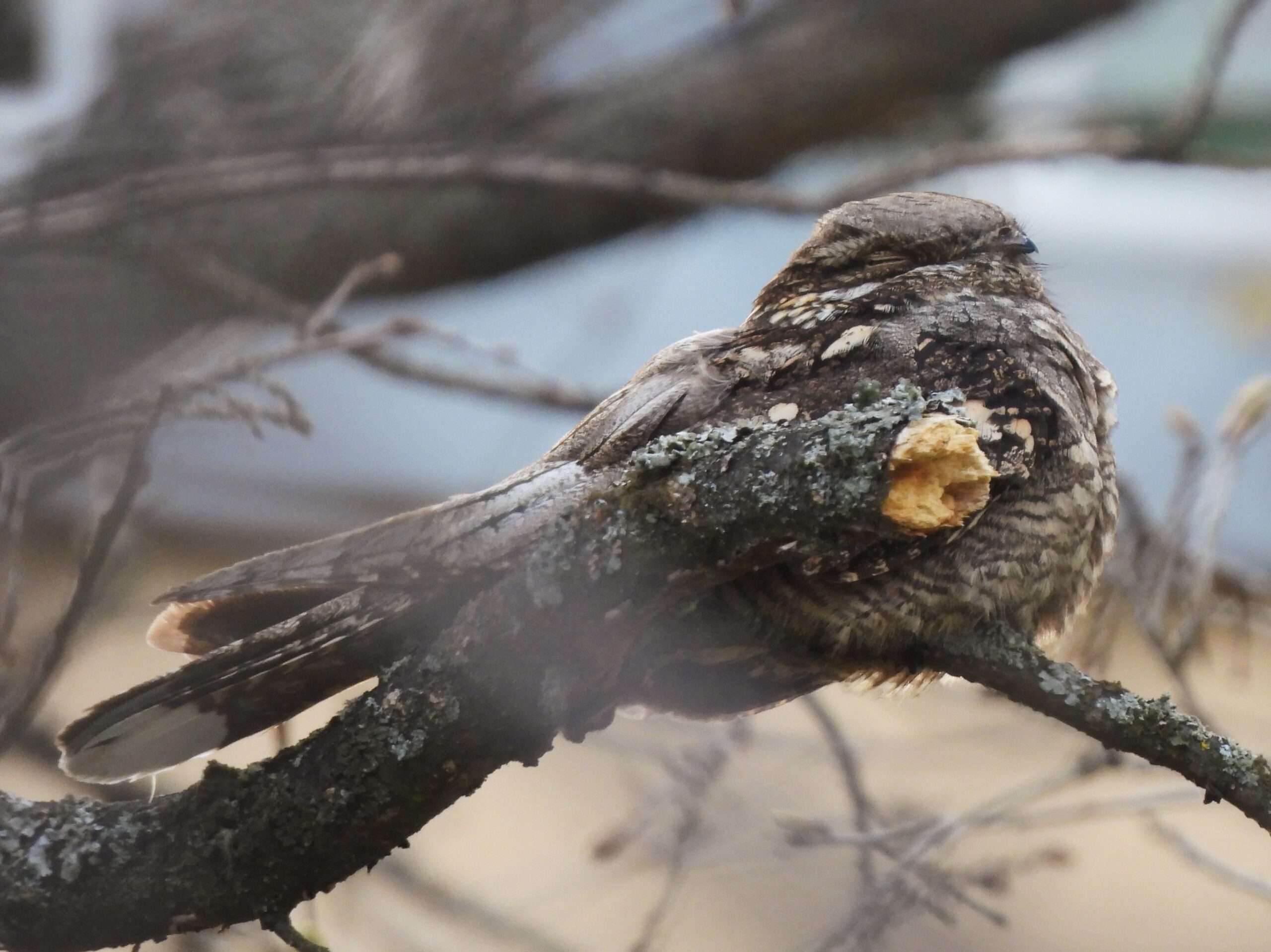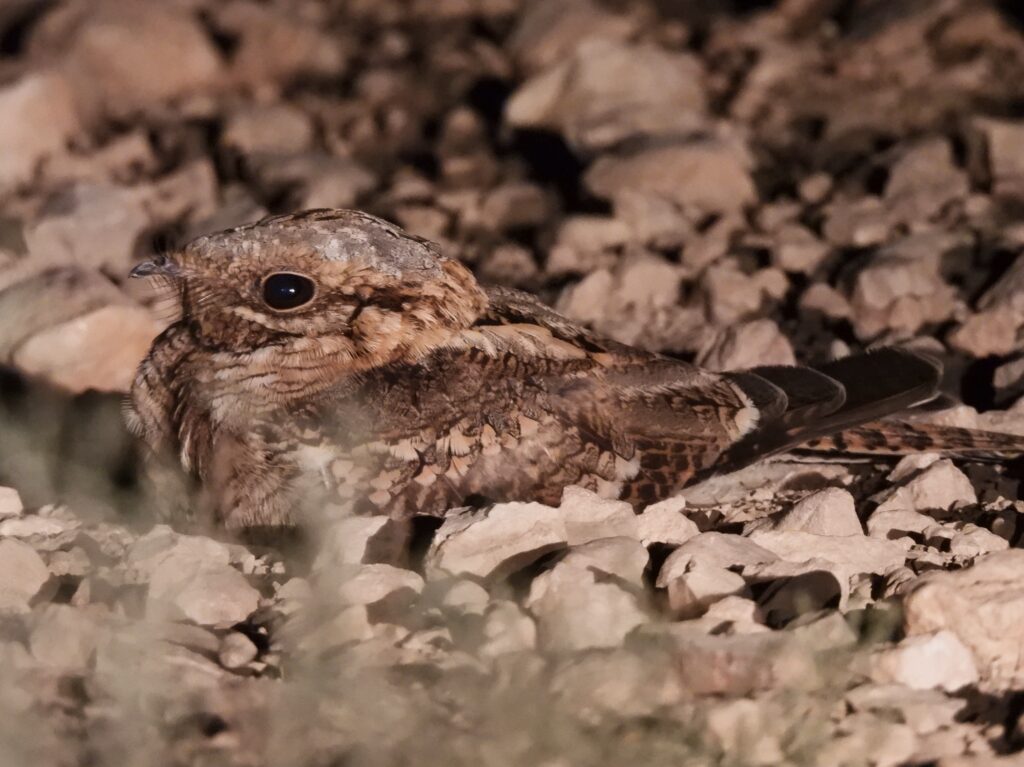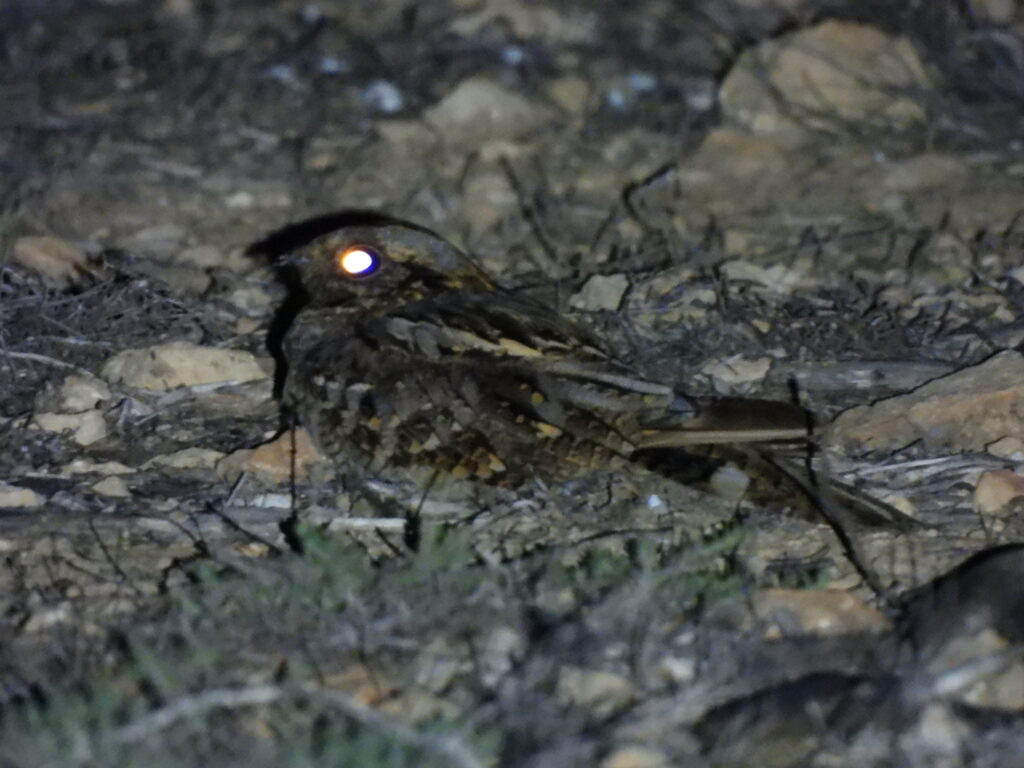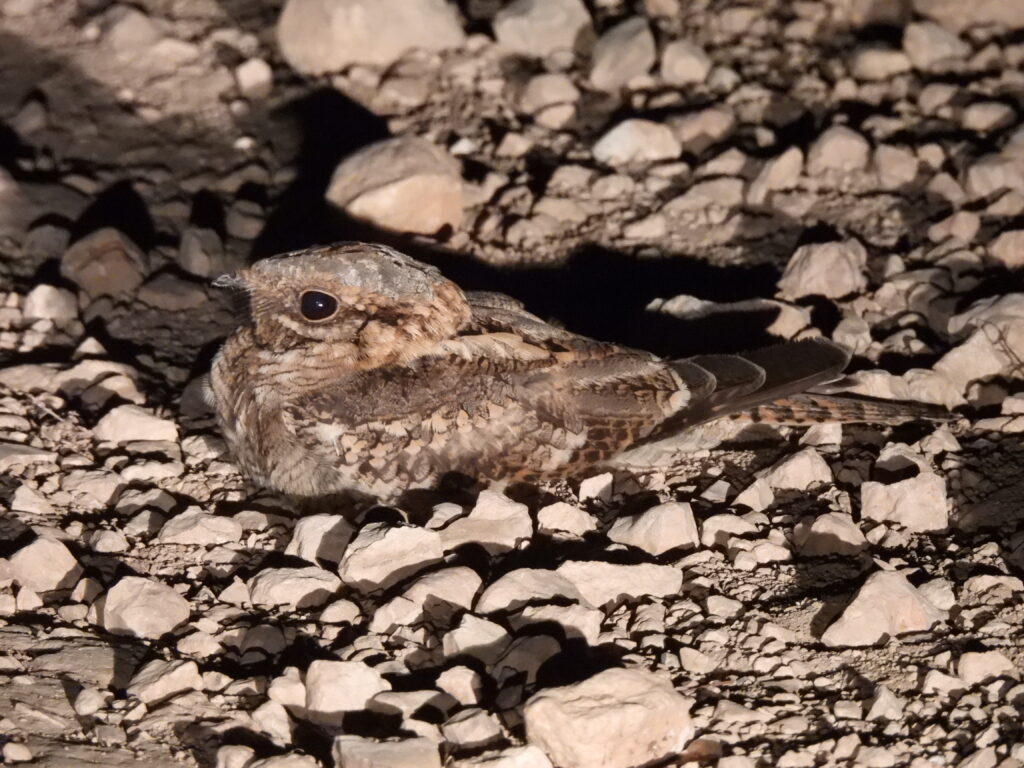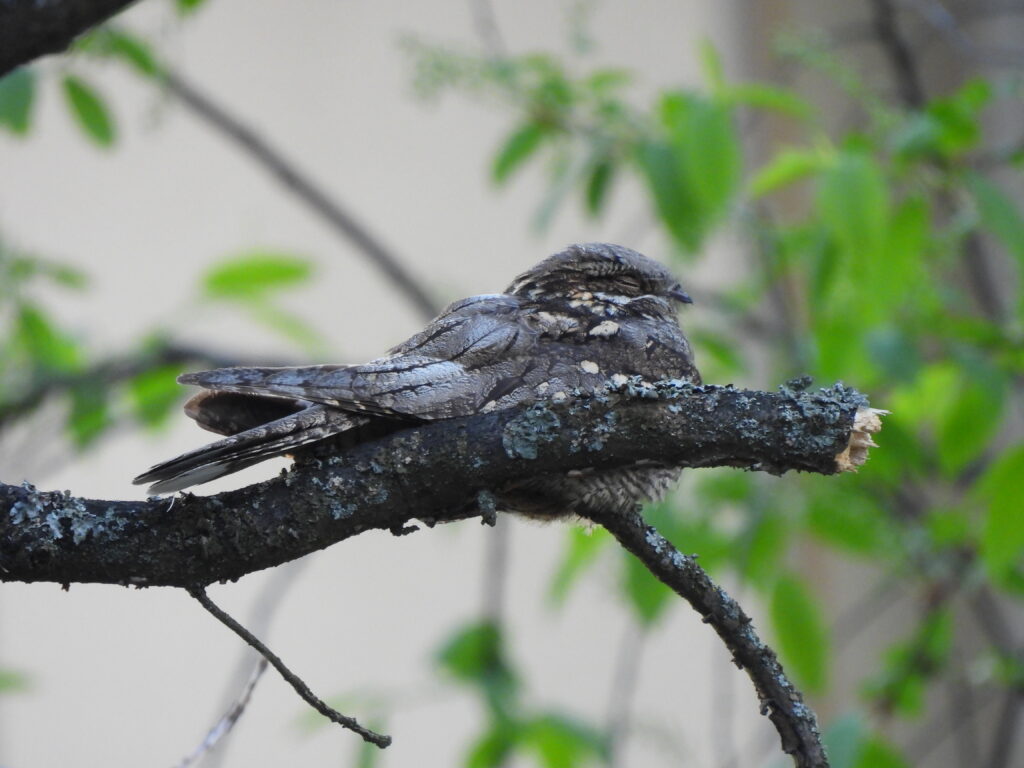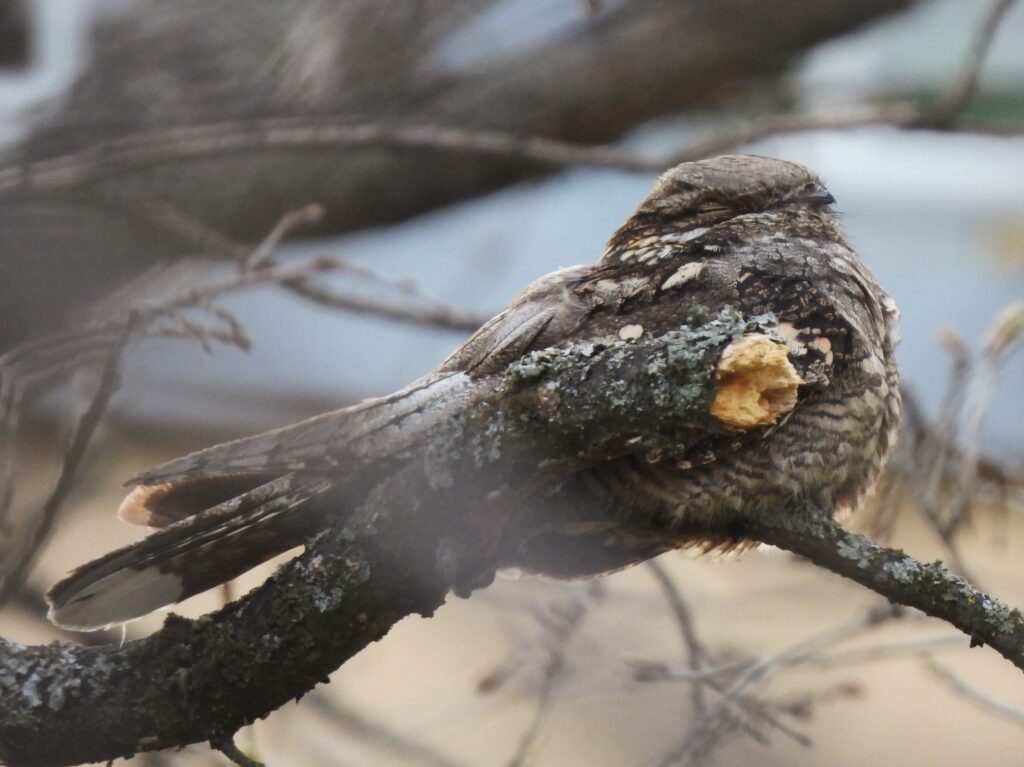The nightjars (family Caprimulgidae) are a family of birds belonging to the order Caprimulgiformes. These nocturnal birds occur in all continents except Antarctica. They are aerial feeders, flying mostly at night to capture preys with their wide mouth flanked by sensitive whisker-like feathers, and spend the day at roost hidden thanks to their cryptic plumages, either on branches or directly on the ground. Some members of this family are unique among birds by undergoing a dormancy period in winter.
The family comprises 98 extant species belonging to 22 genera. Genus Eurostopodus (7 species) has an Australasian distribution. Genus Lyncornis (2 species) is found in the Indomalayan region and genus Gactornis (1 species) is endemic to Madagascar. Genera Lurocalis (2 species), Nyctiprogne (2 species), Nyctipolus (2 species), Nyctidromus (2 species), Tepuiornis (1 species), Uropsalis (2 species), Quechuavis (1 species), Setopagis (3 species), Systellura (1 species), Eleothreptus (2 species), Antiurus (1 species), Hydropsalis (4 species), Siphonorhis (2 species of which 1 probably extinct), Nyctiphrymnus (4 species), Phalaenoptilus (1 species), Antrostomus (12 species) and Chordeiles (6 species) are found in the Neotropics. Genus Veles (1 species) has an Afrotropical distribution. The large genus Caprimulgus (39 species of which 1 disputed) is widespread along the Old World.
Red-necked nightjar
Caprimulgus ruficollis
Breeds mostly in warm areas of the Iberian Peninsula, being one of the only two regular nightjar species in Europe, and migrates to the western Sahel in winter. It often sits on roads at night awaiting for flyover preys. This species is an abundant summer visitor in Alicante, where its distinctive call is a typical sound of the summer in rural areas.
European nightjar
Caprimulgus europaeus
Most widespread nightjar species in Europe to Central Asia, where it is a summer visitor and breeder in forested areas that migrates to Southern Africa in the non-breeding period. Males are strongly territorial, performing display flights and clapping their wings at flight to drive intruders away. This species is a moderate summer visitor in forested areas of Alicante, as well as in Helsinki.
Jerdon’s nightjar
Caprimulgus atripennis
Endemic to south India and Sri Lanka, where it mostly inhabits open woodlands and scrub, mostly calling from trees and resting under bushes rather than other co-occurring species that sit on paths and roads. I have heard and seen this species in south India.

